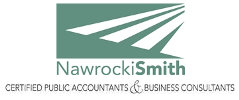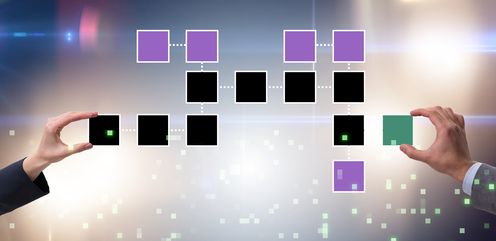Blockchain: A Secure, Tamper-Resistant Ledger
Published: 12/12/2017 5:45:07 PM
Originally developed as the backbone for the cryptocurrency Bitcoin, blockchain technology is showing itself to be useful in a variety of other applications, especially in the financial sector.
The technology behind blockchain may be difficult for some people to understand, and we won’t get too bogged down with specifics in this short blog post, but here are the basics:
- Blockchain is a distributed database, which means pieces of it are located on different computers.
- The records within the database are called blocks.
- Each block contains a timestamp and a link to the previous block.
- Blocks are managed by a peer-to-peer protocol, which must validate any changes to data in a block.
- This structure can serve as a ledger designed to prevent any tampering of the data within the blocks.
Functionally, a blockchain can serve as "an open, distributed ledger that can record transactions between two parties efficiently and in a verifiable and permanent way,” according to the Harvard Business Review.
Caption: This representation of a blockchain shows the original block in green. The black blocks represent the ledger, and the purple blocks are “orphaned.”
Here are some of the ways blockchain may be used:
- Accounting: Accounting may well be one of the professions that experiences the most changes from blockchain technologies. The way certified public accounting firms perform audits will change dramatically, and testing transactions may become a thing of the past. Experts argue that by reducing the amount of audit procedures, testing, data entry, and other rote tasks done by humans, accountants will be able to spend their time making judgment calls and applying their expertise to assist clients in improving their business’ performance.
- Contract law: Blockchain has the potential to transform the way contracts are signed and administered. Again from the Harvard Business Review: “...we can imagine a world in which contracts are embedded in digital code and stored in transparent, shared databases, where they are protected from deletion, tampering, and revision.”
- Medical records (from a different article in the Harvard Business Review): “Today humans manually attempt to reconcile medical data among clinics, hospitals, labs, pharmacies, and insurance companies. It does not work well because there is no single list of all the places data can be found or the order in which it was entered.” Blockchain can do just that.
What started out as the backbone to a cryptocurrency is showing itself to be a versatile tool for countless professions. As for accountants, many in the profession do not foresee any substantial changes for at least another 10 years — but make no mistake: change is coming.
Nawrocki Smith LLP
290 Broad Hollow Road, Suite 115E
Melville, New York 11747
Email: info@nsllpcpa.com

